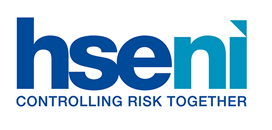Chemical classification means finding out how the chemicals you supply can harm you, others or the environment. Classification is very important and provides the starting point for the controls needed to protect us and the world we live in.
Labels are there to help help identify hazardous chemicals, and explain what the hazards are and how to avoid them.
Packaging is also important to ensure that chemicals are stored and disposed of safely.
These pages provide an introduction to the basics of classification, labelling and packaging and where you can find detailed help and advice.
On 1 June 2015 the old classification and labelling system known as CHIP4 came to an end. The direct acting Classification, Labelling and Packaging (CLP) Regulation has taken over.
The CLP Regulation ensures that the hazards presented by chemicals are clearly communicated to workers and consumers in the European Union through classification and labelling of chemicals.
New guide available on classifying and labelling titanium dioxide
The guide helps companies and national authorities understand how mixtures containing titanium dioxide (TiO2) need to be classified and labelled following its classification as carcinogenic if inhaled.
The classification and labelling requirements for titanium dioxide (TiO2) changed in February 2020. As of 1 October 2021, following Delegated Regulation (EU) 2020/2017, new classification and labelling requirements enter into force.
The substance TiO2 must be classified as carcinogen if inhaled (Carc. 2, H351 (inhalation) when supplied on its own or in mixtures, where the substance or mixture contains 1% or more of TiO2 particles with an aerodynamic diameter ≤10 μm. In addition, mixtures containing TiO2 must be labelled with the supplemental label element ‘Hazardous respirable dust may be formed when used. Do not breathe dust’ (EUH212).
Non-classified solid mixtures must also be labelled with the EUH212 supplemental labelling element if they contain at least 1% of TiO2, regardless of their form, or particle size.
Liquid mixtures containing TiO2 do not require Carc. 2 classification. However, if they contain at least 1% of TiO2 particles with an aerodynamic diameter ≤10 μm, then they need to be labelled with the supplemental label element ‘Hazardous respirable droplets may be formed when sprayed. Do not breathe spray or mist’ (EUH211).
This guide was developed in cooperation with the German competent authority (BAuA), the European Commission and the network of national helpdesks (HelpNet), prompted by the high number of helpdesk questions coming from both industry and authorities.
To download this guide please visit the European Chemicals Agency (ECHA) website at the following link:
Trading with Great Britain from 1 January 2020
Businesses trading with Great Britain from 1 January 2020 please see the HSE (GB) website:
HSE (GB) Helpdesk:
UK government guidance on submitting chemicals information after 1 January 2020
This includes NPIS (National Poisons Information Service) and UFI (Unique Formula Identifier)
Guidance for companies placing hazardous mixtures on the UK market (such as manufacturers, importers, downstream users and distributors) from 1 January 2021, can be viewed at the following link:
How to create a Unique Formula Identifier (UFI)
The following advice is for companies that do not have a base in the EU or do not have a VAT number.
The UFI generator on the European Chemicals Agency’s website can be used by virtually anybody. A link to the UFI generator can be found here:
If a company using the generator does not have an EU VAT number, they can check the box which states: "By ticking this box, I declare that the company does not have a VAT number or chose not to use it to generate a UFI."
The use of the VAT number is a means to ensure that two different companies using the same formulation number will not produce the same UFI.
There are replies to a number of frequently asked questions about UFI in the EHCA Question and Answer section which can be found at the following link:
There are also explanations about what is a UFI, how to generate it and how to use it in the dedicated page on the ECHA website, at:
If you require further clarification you may wish to email the European Chemicals Agency, ECHA using the following ECHA contact form:
CLP Stakeholder Event
HSE (GB) and (DEFRA) have hosted virtual stakeholder events covering actions businesses need to take when the UK Transition ends and how the new GB regulatory regime for chemicals may impact their work.
To view the virtual CLP Stakeholder Event, please see the following Youtube link:
Resources
Plenty of supporting guidance is available for the CLP Regulation. If you have legal obligations under these regulations you should read the guidance and compliance information carefully.
Additional help is available from:
Articles
Related to CLP (Classification, Labelling and Packaging)
Most recent publications
Most recent news items
Access to information
How to request information from the Health and Safety Executive Northern Ireland including Freedom of Information (FOI) and the use of our Publication Scheme.
